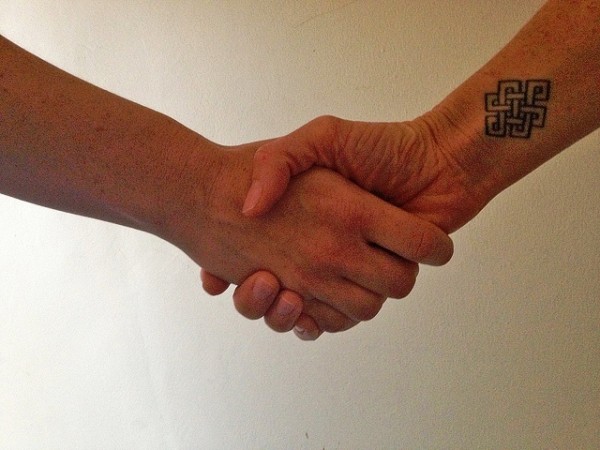Handshake Helps Identify a Person’s Real Age: Study

A person's handshake helps determine his real age, according to a study.
It is believed the strength and grip while shaking hands helps decode personality traits, health and confidence levels. Researchers at the Stony Book University found that hand grip helps gauge the key signs of aging that include cognitive decline, mortality, likelihood for disability and capacity to recover after injury and hospitalization.
The study authors Serguei Scherbov and Warren Sanderson used data of more than 50 experiments in the past conducted on the aging population across the world. Their analysis revealed most studies had employed the simple handshake as common measuring method. Researchers used the same rule to examine participants aged between 60 and 80 years from United States Health and Retirement Studies (HRS).
"We found that based on this survey, a 65-year-old white woman who had not completed secondary education has the same handgrip strength as a 69-year-old white women who had completed secondary education. This suggests that according to a handgrip strength characteristic their ages are equivalent and 65 year-old women ages 4 years faster due to lower education attainment," said Scherbov, a researcher from the International Institute for Applied Systems Analysis (IIASA) in press release.
The authors believe these results provide new way of measuring aging based on people's characteristics like longevity, health, disability and other demographic factors. They added, in their previous trial that considered the number of years a person lived does not accurately calculate the aging process. The current findings are more appropriate and reliable method of comparing the aging process in individuals.
"Our goal is to measure how fast different groups in a society age. If some group is getting older faster than another, we can ask why that might be and see whether there are any policies that could help the faster aging group," added Scherbov.
More information is available online in the journal PLoS ONE.
May 09, 2014 08:49 AM EDT





